Architecture
In the Lap of the Earth
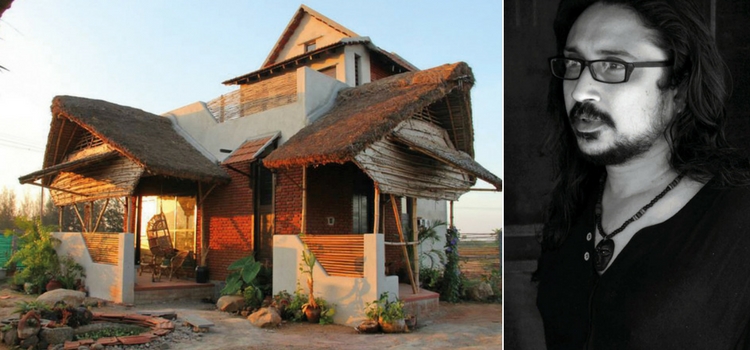
Biju Bhaskar is promoting the concept of natural building through his venture, Thannal
Text Credits: Charishma Thankappan Image Credits: Thannal
Architecture does not just entail the construction of a building, but it is the setting up of a philosophy, thought process, values, and ideals. While conventional architectural models may be an inanimate block of concrete and cement that are ‘finished’ at the end of the erection; there are, however, alternate forms of edifices that are more alive through their symbiosis with nature. And Thannal is one such body that works for the assimilation of nature with human dwellings.
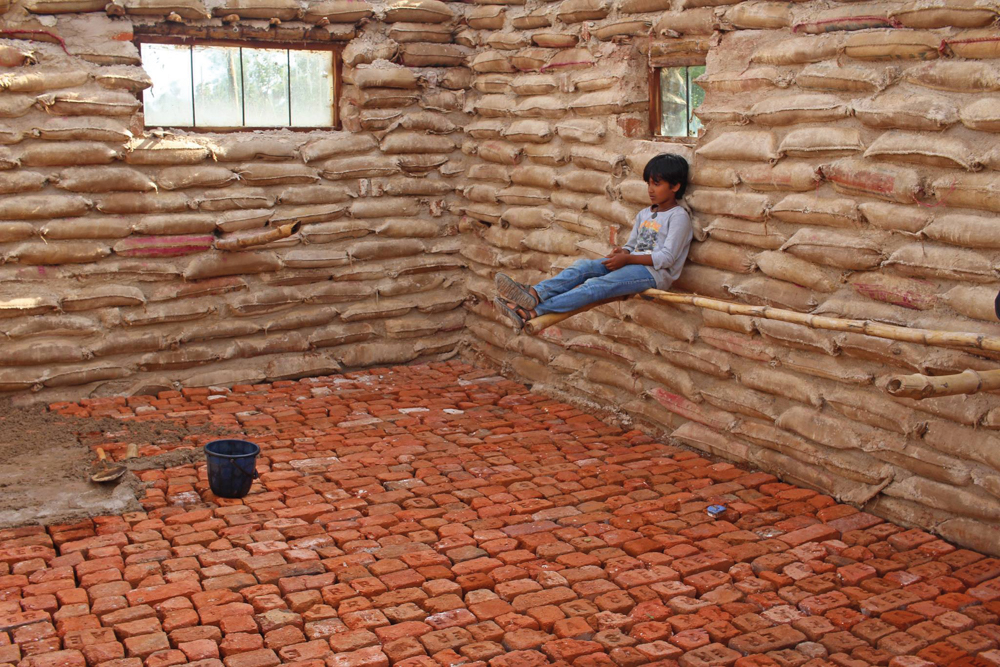
Biju Bhaskar worked in regular architecture for a long duration before quitting it ten years ago. He started Thannal in 2011 with the objective of trying to explore alternative architecture, which consists of green, sustainable, traditional, and vernacular architecture. “We do not compare our works with architecture, but we call it natural building. It’s a term that’s not well-known in the media. The natural building movement is gaining momentum internationally, but is not that progressed in Kerala,” he says. “We have to rethink the subject of mud architecture, which is in practice in Kerala currently, about whether we are doing it through pure sustainable methods,” says Biju, who specializes in mud architecture and operates in the village of Thiruvannamalai in Tamil Nadu.

Building homes was a community-based activity where if you wanted to build your home, your friends, family, neighbors – everyone – came to help you; but today that’s not the case, and one takes huge loans to build their homes. “Kerala is a state that has a large population belonging to the high-income group, so there is a huge potential of using your money to build your home sustainably,” observes Biju. “In the current architectural scenario in Kerala, none of the materials used in building homes is from your native land. Some of the others who proclaim building mud homes are not doing it through pure natural methods, as they are mixing cement with the mud, which lessens the quality of the mud.”
Accessible to all
The beauty of mud building is that it can be built for anyone, rich or poor; the difference comes only in the finishing, says Biju. “It has been only 90 years since cement came into Kerala, and today we are in a stage where people think that they cannot do without it. But don’t we see buildings that are over a hundred years old that are still going strong – temples, churches, manas, etc.? The concrete buildings of today can last only about 20 years before cracks start developing in it. No concrete building has completed 100 years in Kerala.”
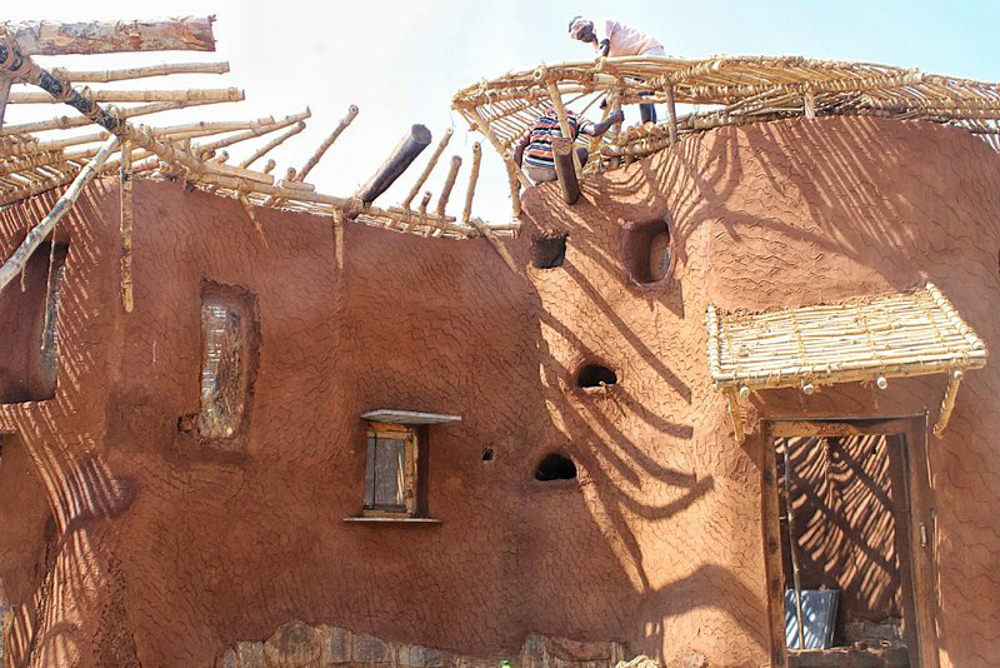
A building’s walls are like the skin on your body – they are porous and have a breathing quality, says Biju. Only the buildings of olden times had such walls and construction; they kept the building naturally cool. “Today’s buildings don’t have such a quality, and instead make the interiors of the building hot. Enormous power is used through air-conditioning to keep it cool.”
Hand in hand with nature
Another focus area for Thannal is the communion of plants and buildings. “In our research, we have found that plants have a lot of importance in buildings. The bark and sap of plants can be used in various ways in the construction of a building.” And there is no bigger example for this than Biju’s own abode, which is an earthbag home. “It has about 12 varieties of herbal ingredients in it. So the air that passes through the walls is diluted with the essence of these herbs.” Biju points out that cement companies today are one of the major sources of air pollution. The paints used nowadays are also mixed with toxins that are dangerous to people’s health.

Biju says that there are a lot of positive changes happening in India and with the younger generation of architects for the past ten years. “The green movement in agriculture – organic farming, is coming along very well, what with the involvement of renowned people such as the actor, Sreenivasan. A lot of farmers come to meet us.” But at the same time, Biju rues another fact. “What is saddening is that villagers are lured by the urban living styles and moving towards it, discarding their natural means of life. So we are building free homes for them to bring them back to it and make them realise the importance of it.”
Towards growing more villages
Biju talks about his philosophy at Thannal. “We believe that instead of growing more towns, we should grow more villages because today, the times have changed, and one need not live in an urban scenario for sustenance. Villages and pure natural building should thrive.”
At Thannal, which Biju set up with his wife Sindhu, they give a lot of prominence to research and documentation. With the aim of growing more natural builders, they hold workshops to disperse the awareness. “We have created a hub called Natural Builders of India. Those who pass out have to complete a project in two years that is completely based on natural building. I also bring two-three projects as there are no examples for students in India. And at the end of the project, each student has to bring another student to enroll in it. So according to our calculation, the natural building movement is going to bloom in five years’ time in India. ”

Biju takes up only a maximum of two or three projects in a year. Receiving volunteers from all over India, their income is only from the workshops that they hold, claims Biju. A naturally built home of 500-1,000sq ft can be completed in four to five months. The costs, naturally, are always lower than conventionally built structures.
Thannal works across India and they choose villages after extensive studies. “In our travels, we discovered that all these people who are knowledgeable about natural building in the villages, are all 70-80 years old. We are trying to revive their knowledge, for which, we are living with a master mason every year. We use local people from the particular areas, as that way, there is exchange of information.”
Biju is an avid traveller and a devotee of Ramana Maharshi. Asked why he chose to settle in Thiruvannamalai, Biju says, “It is a place of gurus and a place for self-enquiry. It is one among the Pancha Bhoota Sthalam, and is symbolic of fire. And all gurus have taught that one should build mud houses.”
Architecture
5 Sustainable Interior Design Trends to Embrace in 2024
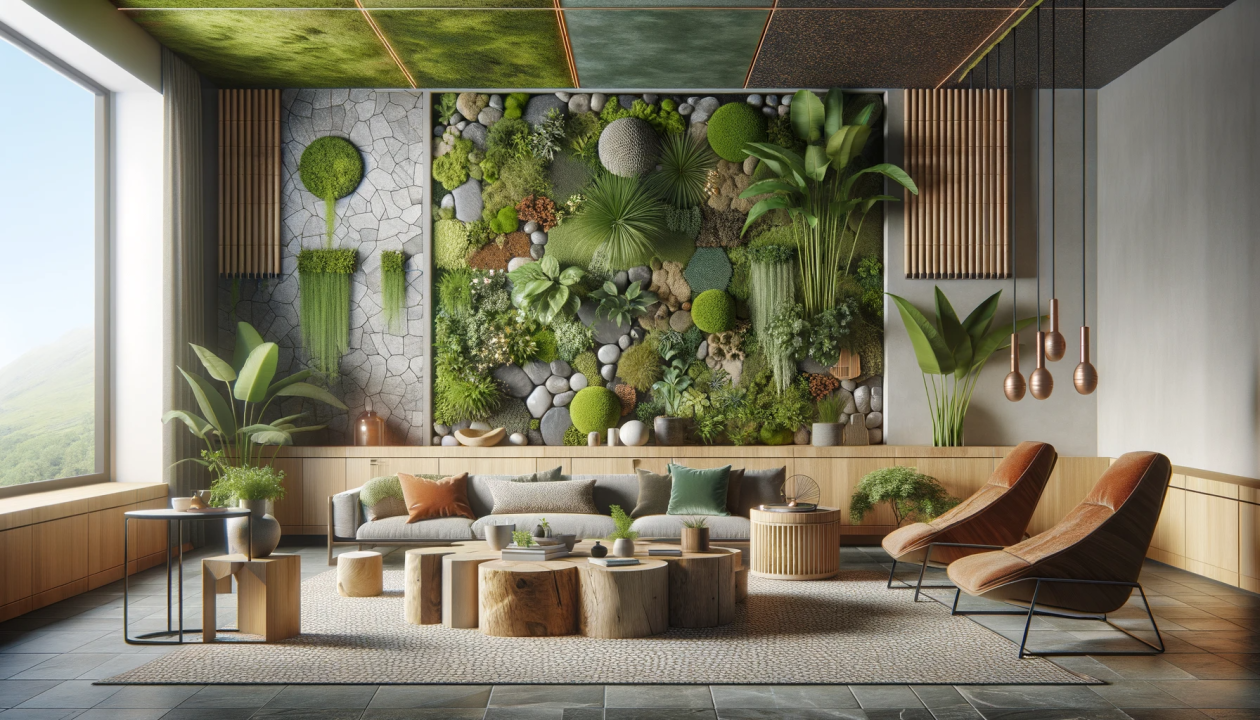
As the world becomes increasingly aware of the importance of sustainability, it’s no surprise that eco-friendly practices are making their way into the realm of interior design. In 2024, we can expect to see a surge in sustainable interior design trends that not only enhance the beauty of our living spaces but also minimise our environmental footprint. From repurposed materials to energy-efficient solutions, here are five sustainable interior design trends to embrace this year.
Upcycled Furniture:
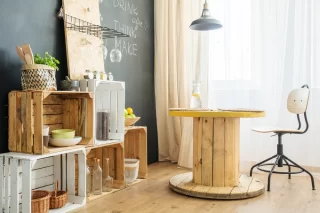
One of the most prominent sustainable interior design trends of 2024 is the use of upcycled furniture. Instead of buying new pieces, consider giving old furniture a new lease on life by refurbishing or repurposing them. From reclaimed wood tables to refurbished chairs, upcycled furniture adds character and charm to your space while reducing waste and conserving resources.
Biophilic Design:
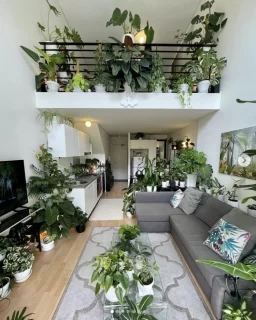
Biophilic design, which emphasizes a connection to nature, continues to gain popularity in 2024. Integrating natural elements such as plants, natural light, and organic materials into your interior design not only enhances aesthetics but also promotes well-being and sustainability. Consider incorporating living walls, indoor gardens, and sustainable wood finishes to bring the outdoors inside and create a healthier living environment.
Energy-Efficient Lighting:
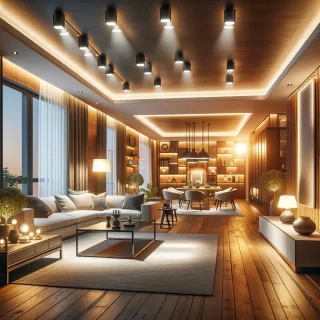
With a growing focus on energy conservation, energy-efficient lighting solutions are becoming a staple in sustainable interior design. LED lights, in particular, consume significantly less energy than traditional incandescent bulbs and last much longer, reducing both energy consumption and maintenance costs. Additionally, consider incorporating natural light sources such as skylights and large windows to maximize daylight and minimize the need for artificial lighting during the day.
Sustainable Textiles:
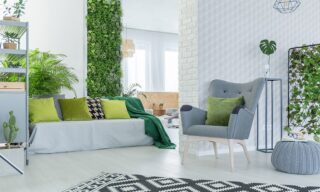
When it comes to upholstery and soft furnishings, opting for sustainable textiles is key to reducing environmental impact. Look for fabrics made from organic or recycled materials, such as organic cotton, hemp, bamboo, or recycled polyester. These materials not only reduce the use of harmful chemicals and pesticides but also minimize waste and support eco-friendly production practices. Additionally, consider investing in durable, high-quality textiles that stand the test of time, reducing the need for frequent replacements.
Smart Home Technology:
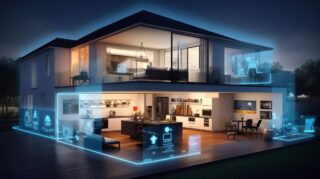
In 2024, smart home technology continues to evolve, offering innovative solutions for sustainable living. From smart thermostats that optimize energy usage to home automation systems that control lighting and appliances, these technologies can help reduce energy consumption and increase efficiency in your home. Additionally, smart home devices such as occupancy sensors and smart meters provide valuable insights into your energy usage, empowering you to make informed decisions about resource management and conservation.
As we strive to create more sustainable living environments, embracing these five interior design trends can help reduce our environmental impact while creating beautiful and functional spaces. Whether you’re upcycling old furniture, incorporating natural elements, or investing in energy-efficient technologies, every sustainable choice contributes to a greener future for generations to come. So let’s embrace these trends and make sustainability a cornerstone of our interior design practices in 2024 and beyond.
Architecture
Designing a Functional Home Office: Tips for Productivity and Comfort
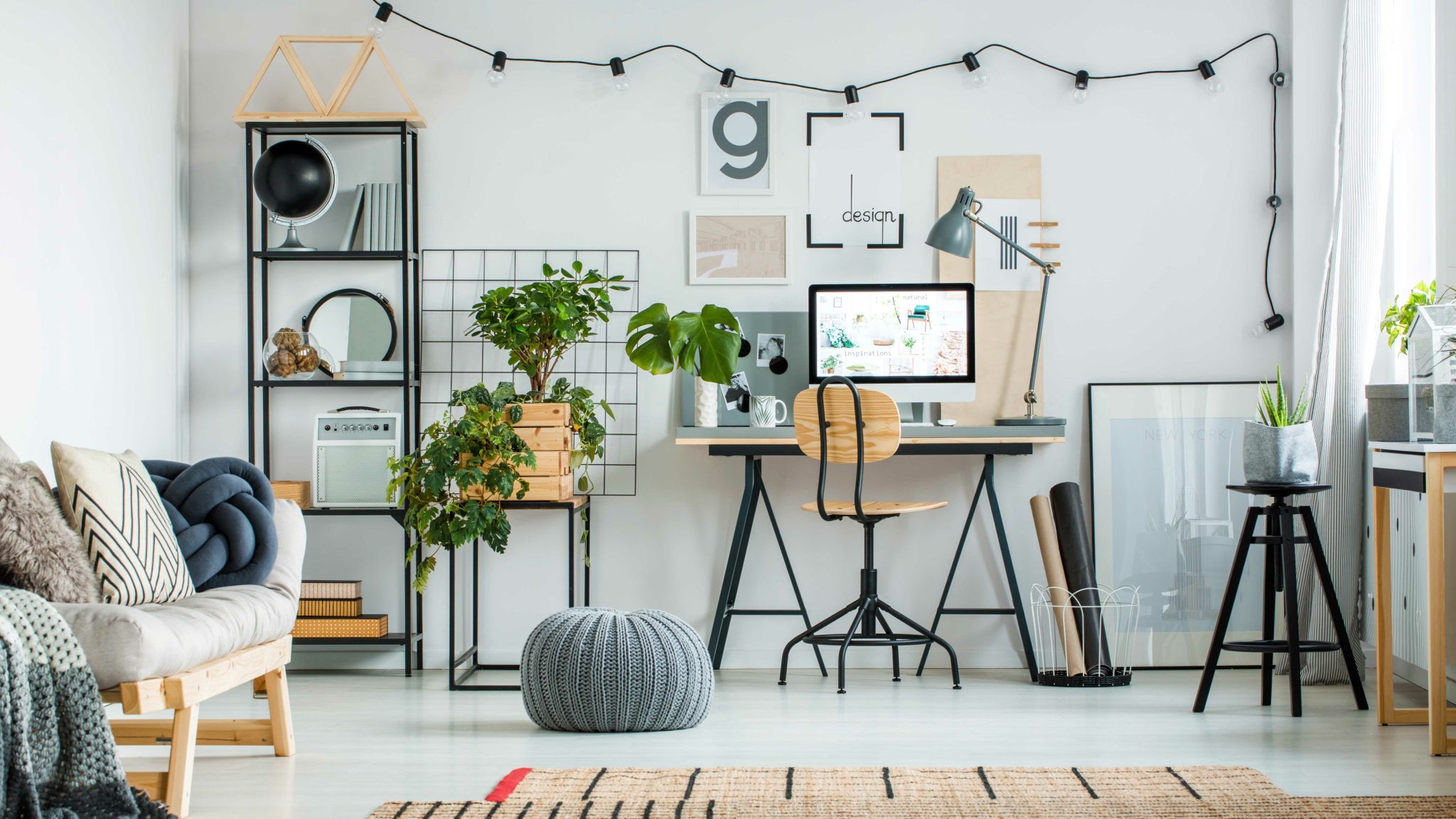
In today’s ever-evolving work landscape, the home office has become an essential sanctuary for productivity and creativity. Whether you’re a remote worker, freelancer, or entrepreneur, designing a functional home office is paramount for maintaining focus, maximizing efficiency, and enhancing overall well-being. Here are some expert tips to help you create a workspace that promotes productivity and comfort:
Choose the Right Location
Select a quiet and well-lit area in your home that is conducive to work. Ideally, this space should be away from distractions like heavy foot traffic or noise from common areas.
Invest in Ergonomic Furniture
Your office chair and desk are vital components of your workspace. Invest in ergonomic furniture that promotes good posture and reduces the risk of discomfort or injury during long hours of work.
Prioritize Natural Light
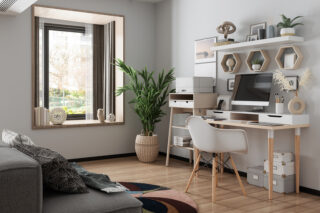
Position your desk near a window to take advantage of natural light. Natural light not only enhances mood and energy levels but also reduces eye strain and fatigue.
Declutter Regularly
Keep your workspace clutter-free by organizing cables, files, and supplies. A clean and organized environment fosters clarity of mind and helps minimize distractions.
Personalize Your Space
Incorporate elements that inspire and motivate you, such as artwork, plants, or motivational quotes. Personalizing your space can boost creativity and make your home office feel more inviting.
Optimize Technology Setup
Ensure that your technology setup including your computer, monitor, keyboard, and mouse is optimized for efficiency and comfort. Consider investing in accessories like an adjustable monitor stand or a wireless keyboard and mouse for added flexibility.
Incorporate Greenery
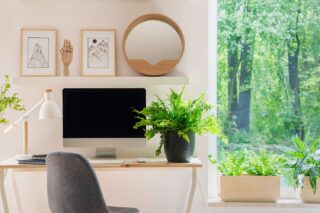
Introduce plants into your home office to improve air quality and add a touch of nature to your space. Plants not only enhance aesthetics but also have been shown to reduce stress and increase productivity.
Create a Distraction-Free Zone
Minimize distractions by setting boundaries with family members or roommates and establishing specific work hours. Consider using noise-canceling headphones or a white noise machine to block out unwanted sounds.
By implementing these tips, you can design a home office that promotes productivity, creativity, and overall well-being. Remember that every individual’s needs and preferences are unique, so feel free to experiment and adjust your workspace to suit your specific requirements. With a well-designed home office, you’ll be better equipped to tackle your tasks with focus, efficiency, and comfort.
Architecture
A Guide to Choosing the Perfect Colors for Your Home Interior

Your home is your sanctuary, and choosing the right colors for its interior can significantly impact the atmosphere and ambiance of each room. Whether you’re looking to create a cozy retreat, a vibrant living space, or a serene oasis, selecting the perfect color palette is key. In this guide, we’ll walk you through the process of choosing the right colors for your home interior to reflect your personal style and create a harmonious living environment.
Consider the Mood You Want to Create:
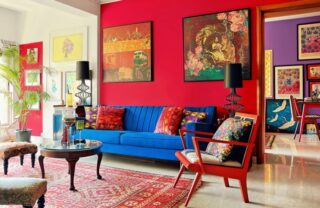
The first step in choosing the right colors for your home interior is to consider the mood or atmosphere you want to evoke in each room. Do you prefer a calming and serene space, or are you looking for something more vibrant and energizing? Think about how you want to feel when you’re in each room and choose colors that align with those emotions.
Take Lighting into Account:
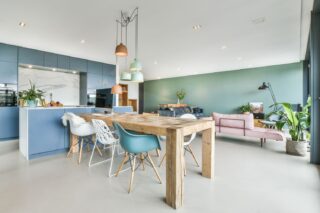
Lighting plays a crucial role in how colors appear in a room. Natural light can enhance certain hues while making others appear dull. Consider the direction and intensity of natural light in each room when choosing paint colors. Rooms with ample natural light can handle bold and vibrant colors, while those with less light may benefit from softer, lighter shades.
Create a Cohesive Color Scheme:

To ensure a cohesive flow throughout your home, choose a consistent color scheme that ties all the rooms together. You can achieve this by selecting a few key colors and using them in different combinations throughout the house. Neutral colors like whites, grays, and beiges make excellent base tones, while accent colors can add pops of personality and interest.
Explore Color Psychology:
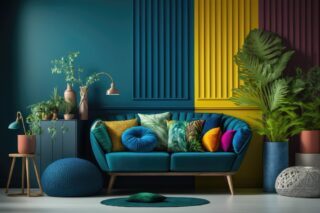
Color psychology can help you understand how different colors can affect mood and behavior. For example, blue is often associated with calmness and tranquility, making it an excellent choice for bedrooms and bathrooms. Yellow, on the other hand, can evoke feelings of happiness and energy, making it ideal for kitchens and living areas. Consider the psychological effects of each color when making your choices.
Test Paint Samples:
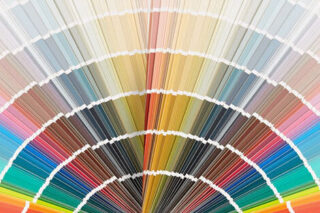
Before committing to a color for your walls, it’s essential to test paint samples in the actual space. Paint a small section of the wall with your chosen colors and observe how they look throughout the day in different lighting conditions. This will help you make an informed decision and ensure that you’re happy with the final result.
Don’t Forget About Accents and Accessories:
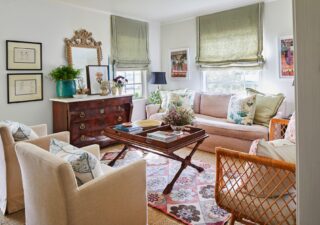
In addition to wall colors, consider how accent pieces and accessories can complement your chosen color scheme. Throw pillows, rugs, curtains, artwork, and furniture upholstery can all add depth and dimension to your space while tying the room together visually.
Choosing the right colors for your home interior is a personal and creative process that can transform your living space into a place you love to call home. By considering the mood you want to create, taking lighting into account, creating a cohesive color scheme, exploring color psychology, testing paint samples, and incorporating accents and accessories, you can design a home that reflects your unique style and personality. So, let your creativity flow, and enjoy the process of bringing your vision to life!
-

 Entertainment3 months ago
Entertainment3 months agoThe Stunning looks from Bhagya Suresh’s Wedding
-

 Fashion3 months ago
Fashion3 months agoMost Discussed Ajrakh Saree of Alia Bhatt
-

 Entertainment3 months ago
Entertainment3 months agoThe Most Stylish Guests of Bhagya Suresh Reception
-

 Entertainment4 months ago
Entertainment4 months agoEverything about the Ira Khan wedding that is out of the norm
-

 Entertainment3 months ago
Entertainment3 months agoBridal Bliss : All Bridal Looks of Swasika Vijay
-

 Entertainment3 months ago
Entertainment3 months agoAll About The Dreamy Pre Wedding Invite Of Anant Ambani & Radhika Merchant
-

 Fashion3 months ago
Fashion3 months agoMajor Denim Trends You Need To Know in 2024
-

 Entertainment3 months ago
Entertainment3 months agoBest Looks from Golden Globes 2024


































